The Fort Bard is an imposing military structure that stands on top of a fortress at the entrance of the Aosta Valley, in a dominant position in the Dora Baltea gorge.The building as it stands today was built in the nineteenth century by the Savoy expanding a structure dating back to the sixth century, a period in which is documented an ostrogothic garrison.
In 1800, the fort became the protagonist of a famous resistance against the Napoleonic army, which took two weeks to conquer. After a long period of neglect, the Fort Bard was the subject of major restoration and later opened to the public in 2006, becoming a museum and cultural center of great interest.
The Fort Bard is easily accessible by car and train, thanks to Hône-Bard station, and has a hotel with 11 exclusive rooms, a restaurant, a café and a bookshop.

The Fort Bard between art, culture and scientific divulgation
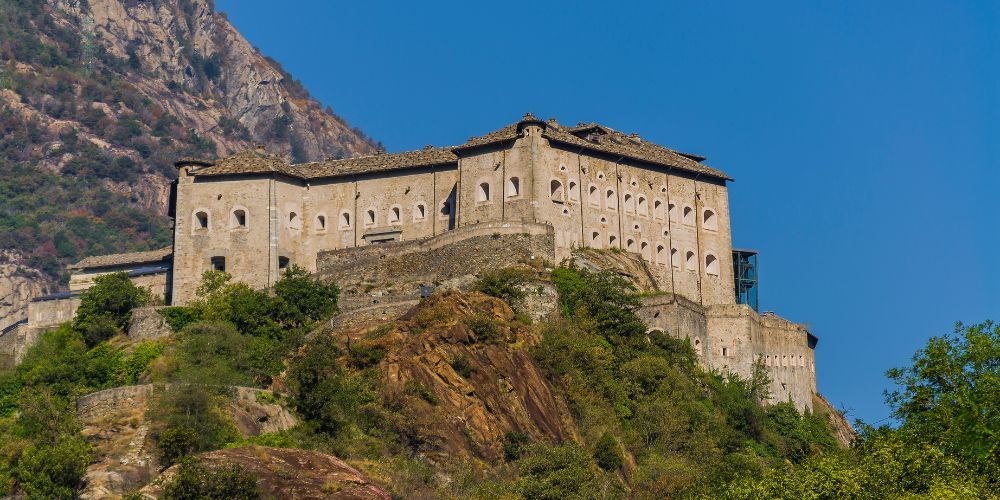
Ph Canva by Stefy Morelli
Events, temporary exhibitions and permanent museums: within the Fort Bard walls there is the Museum of the Alps that testifies to the history, nature and mountain culture, the Museum of Fortifications and Borders that documents military life and historical events and the Prisons that show a glimpse of the dramatic conditions of detention of prisoners.
The fortress houses in its rooms temporary exhibitions of ancient and contemporary art, musical and theatrical performances, educational workshops: in recent years, the Fort Bard has become home to popular and scientific activities related to climate change research in glacial areas, an important point of reference among the Italian cultural institutions dedicated to the story of the mountain and its complex transformations.
In this context was recently opened the path "The Alps of Children" which offers educational activities and insights.
Find out more about Fort BardThe Fort Bard: history
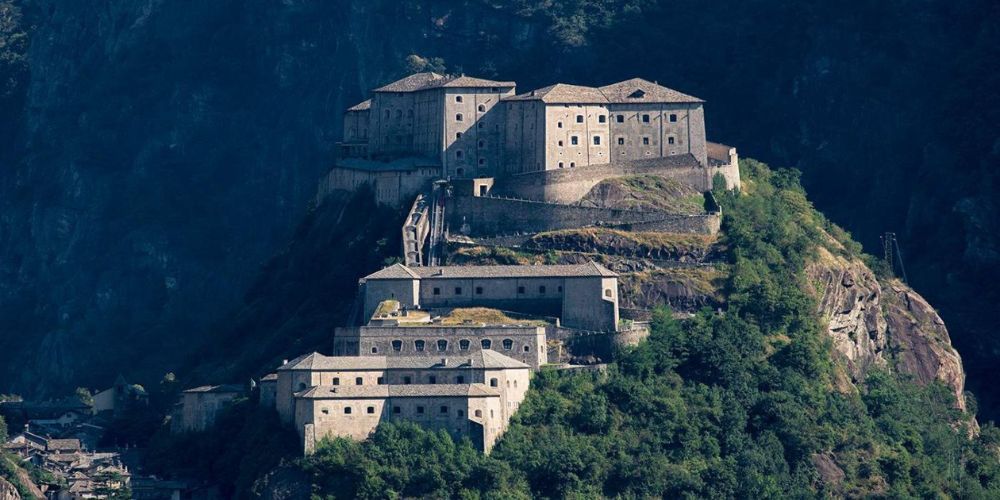
Ph by Fort Bard
The Fort Bard dominates a rocky promontory at the entrance of the Aosta Valley: a strategic position for the control of transit between Italy and France.
The first evidence of human settlements in the Bard gorge dates back to the Neolithic: on the smooth rocks at the foot of the fort are still visible rock carvings and cups dating back to the second millennium B.C. that document propitiatory rituals of ancient local populations.
The route of the road, carved out the rock, dates back to Roman times: the strategic position assumes that the area was fortified since pre-Roman times, but the first written evidence dates back to the sixth century, period in which the presence of an Ostrogoth garrison is documented during the reign of Theodoric.
In 1034 the fortified settlement belonged to Boso, Viscount of Aosta, whose descendants maintained the lordship of Bard until the first half of the thirteenth century: in 1242 it was conquered by Amedeo IV of Savoy and passed under Savoy rule.
Over the centuries the attempts to conquer it were not successful, until the famous siege of Napoleon in 1800: after two weeks of resistance the captain Stockard von Bernkopf was forced to sign the surrender and Napoleon gave orders to raze the fortress.
The fort was then rebuilt by Carlo Felice between 1830 and 1838 to a design by the military engineer Francesco Olivero.
But at the end of the 19th century the Fort Bard was in an increasingly marginal position compared to the major war episodes, gradually starting to decline: first used as a prison and then as an ammunition depot, became in 1975 property of the Aosta Valley Region that restored it and transformed it into a very important museum and cultural center.
The Fort Bard today
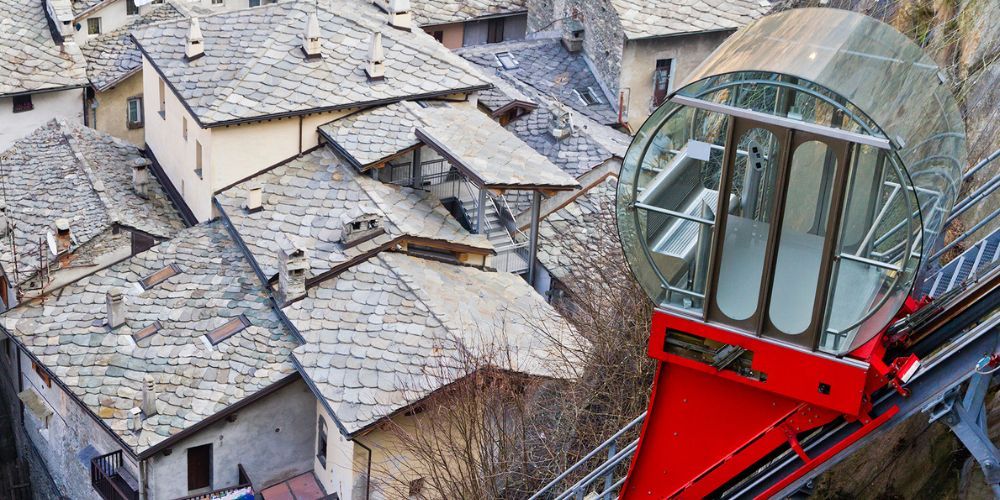
Ph Canva by oriredmouse
The Fort Bard has remained almost intact since its reconstruction in 1838: the fort consists of three main buildings at different levels, between 400 and 467 meters: the lowest is the Opera Ferdinando, the middle is the Opera Vittorio, while in the upper part is the Opera Carlo Alberto.
The Opera Ferdinando is divided into two parts, the Lower and the Upper: here is the Museum of Fortifications and Frontiers. Next to it there are the Opera Mortars and the Powder Magazine, which host the premises for educational workshops and temporary exhibitions.
The Opera Vittorio, currently in the conversion phase, will become the headquarters from 2024 of the laboratories dedicated to the theme of climate change on glacial areas.
The highest part is also the most imposing: inside we find the Opera di Gola and the Opera Carlo Alberto with their respective courtyards. On the first floor there is the Museo delle Alpi, while on the ground floor there are spaces dedicated to temporary exhibitions (Cannoniere, Cantine, Corpo di Guardia) and the Vallée Culture space.
Inside the Opera Carlo Alberto there are also the Prisons: 24 small cells where prisoners were held in the nineteenth century. Later transformed into a warehouse for the storage of food, today this area has become a multimedia path dedicated to the history of the fortress.
The Fort Bard is easily accessible thanks to panoramic lifts that from the village of Bard allow access to the various levels: there are also two pedestrian streets, one external and one internal, with two thematic paths that illustrate the characteristics of the landscape and the surrounding nature.
The next temporary exhibitions
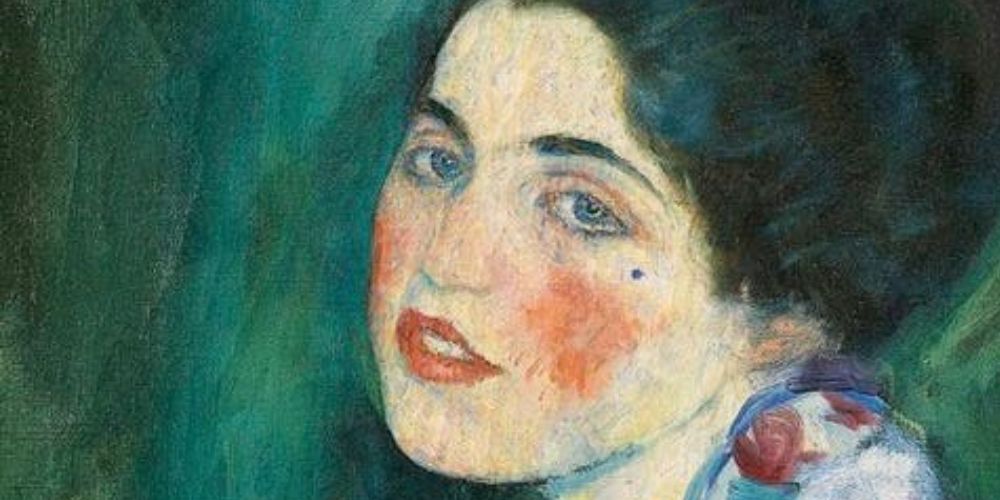
Ph by Fort Bard
The Fort Bard, in addition to hosting the Museum of the Alps and the Museum of Fortifications and Frontiers, is a prestigious exhibition venue that offers temporary exhibitions of art and photography.
Currently you can visit these exhibitions:
Gabriel Loppé, artist, mountaineer and traveller: an exhibition dedicated to the French artist Gabriel Loppé, painter, mountaineer, traveller and photographer, who documents with his works the beauty and challenge of the mountains. The exhibition is open until 1st May 2024 in Museum of the Alps.
Gian Paolo Barbieri. Beyond: an exhibition that celebrates the great Italian photographer, author of celebrity portraits, exotic reportage and fashion images. The exhibition is open until March 3, 2024 in Sala Canonica.
Mont Blanc: photographic and scientific research: an exhibition that proposes an iconographic and scientific journey among the peaks of Mont Blanc, through the photographs of Marco Anfossi and the data collected by the project L'Adieu des glaciers. The exhibition is open until 7 January 2024 in Opera Carlo Alberto.
Carlo Mollino. Inclined landscapes. Photographs by Armin Linke: an exhibition that pays tribute to the 50th anniversary of the death of Carlo Mollino, architect and designer from Turin, through the photographs by Armin Linke that trace his works and passions. The exhibition will be open from 17 November 2023 to 18 February 2024 inside the Opera Mortai.
From 1 December 2023 to 10 March 2024 the Fort Bard will also host the "Portrait of a Lady" by Gustav Klimt a famous painting that will enhance the spaces of Military Chapel. The canvas, which belongs to the Ricci Oddi Modern Art Gallery of Piacenza and can be dated between 1916 and 1917, is one of the three works of the great Viennese master on Italian soil and is the only one to be purchased by a private collector.
The medieval village between history and tradition
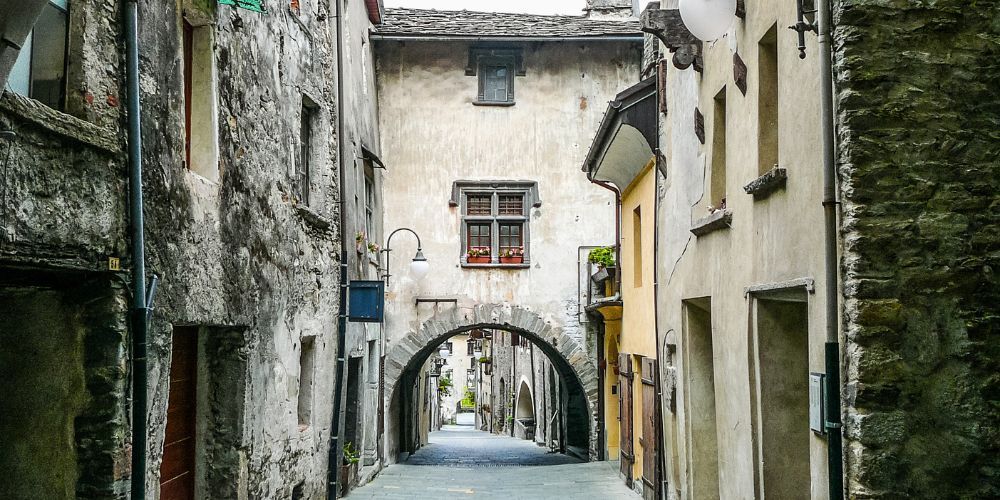
Ph Canva by scrisman
The village of Bard retains its medieval charm and is considered one of the most beautiful villages in Aosta Valley: between stone houses, narrow alleys and historic buildings the atmosphere is that of a journey through time. Close between the slopes of the mountain and the Fort Bard, has many points of interest to report:
The parish church of Santa Maria Assunta (12th century) and its Romanesque bell tower.
Nicole Palace of the eighteenth century, residence of the last counts of Bard, which bears the signs of the bullets of the Napoleonic siege on the facade and a beautiful frescoed chapel.
Valperga House of the sixteenth century, with an interesting mullioned window and a fresco on the façade.
Challant House, belonged to the owner of the Castle of Issogne, with frescoed walls and the presence of the coat of arms of the House.
Casa Ciuca (drunk), today transformed into a holiday home and wine bar, with inside a wooden spiral staircase called 'Viret'.
House of the Bishop, which was the place of exile of the Bishop of Alba at the beginning of 1700.
The house of the Sundial, the only one in the village with a sundial on the facade.
The village also organizes many events throughout the year, such as the nativity scenes that illuminate the streets on December nights, parades in medieval costume in July and the festival of excellent food and wine products of the Aosta Valley "Marché au Fort" which takes place in October.
About the author
Written on 01/12/2023

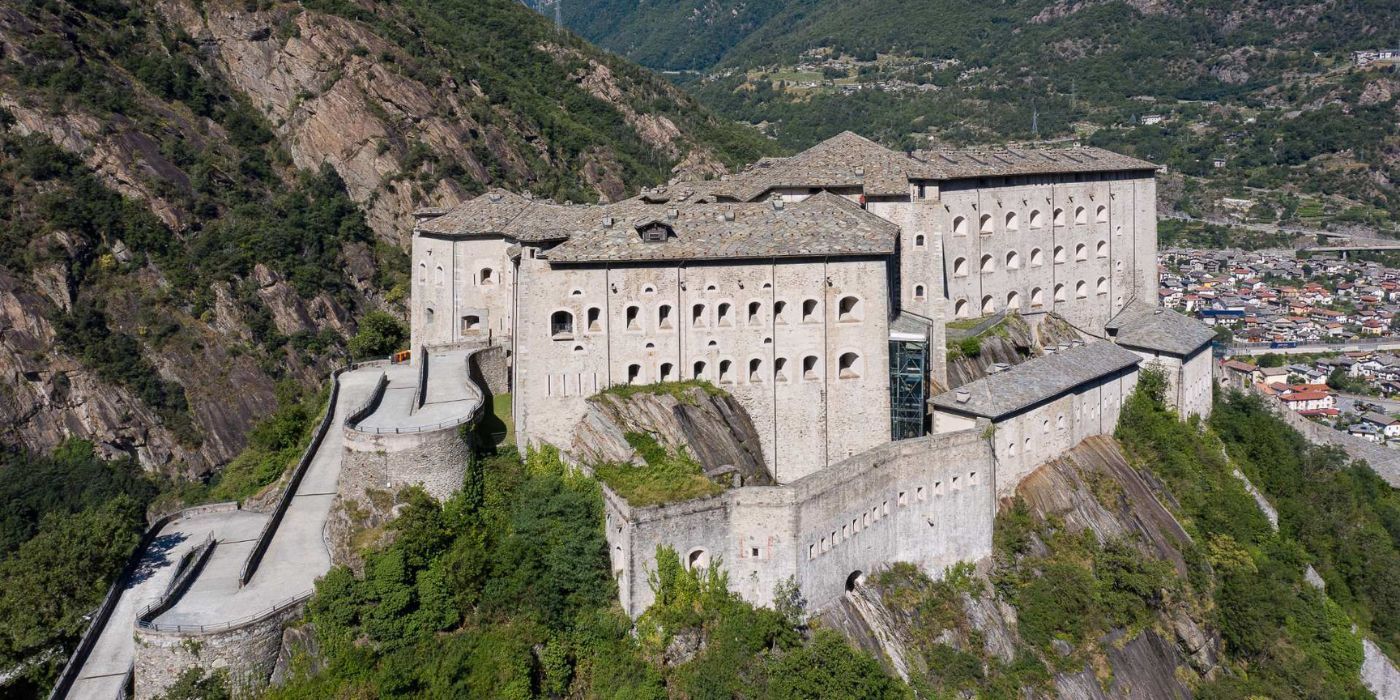

Sara Milanolo
The Fort Bard with a imposing structure dominates the valley: discover the transformation from a military outpost to a cultural and artistic centre.